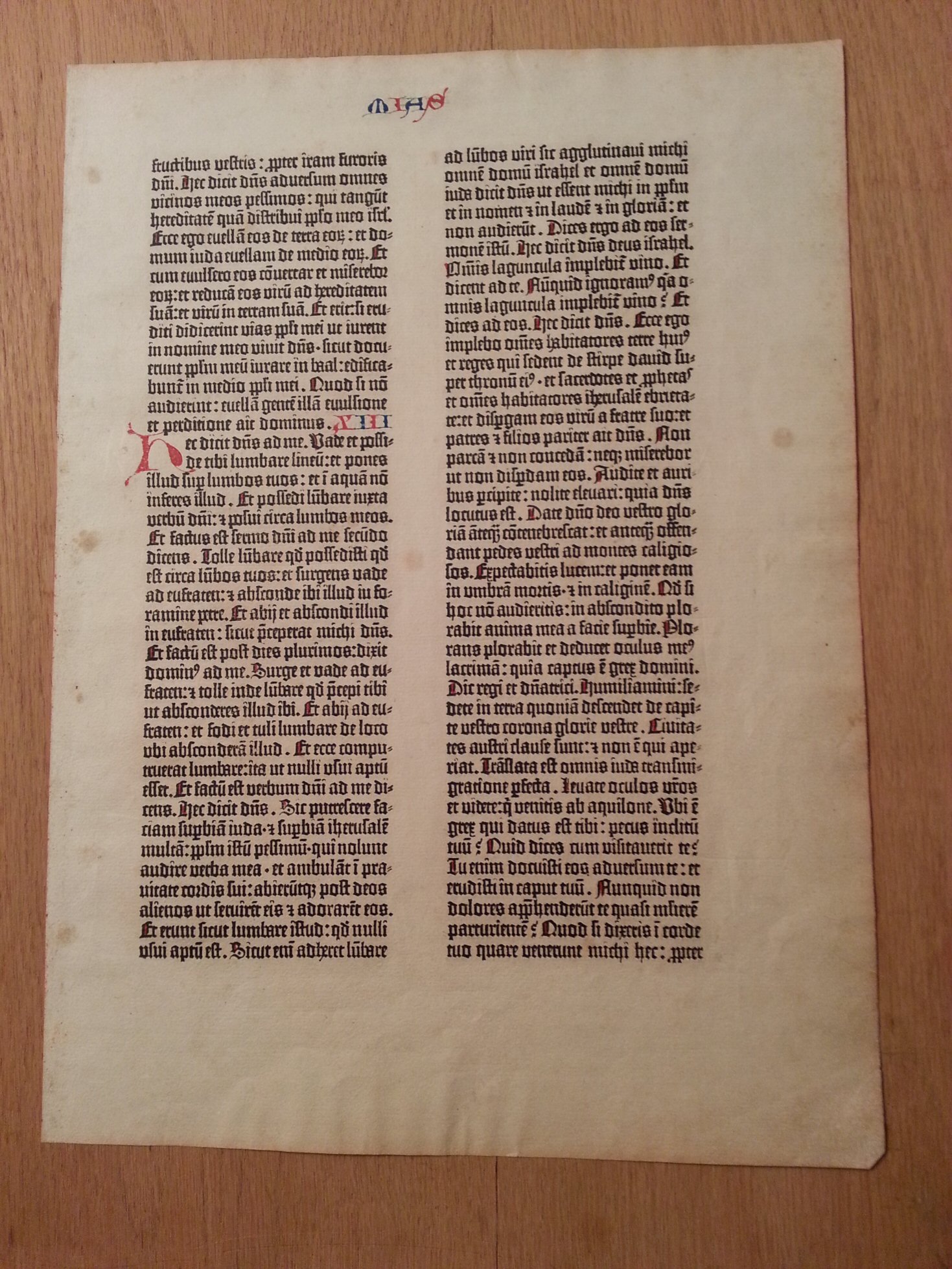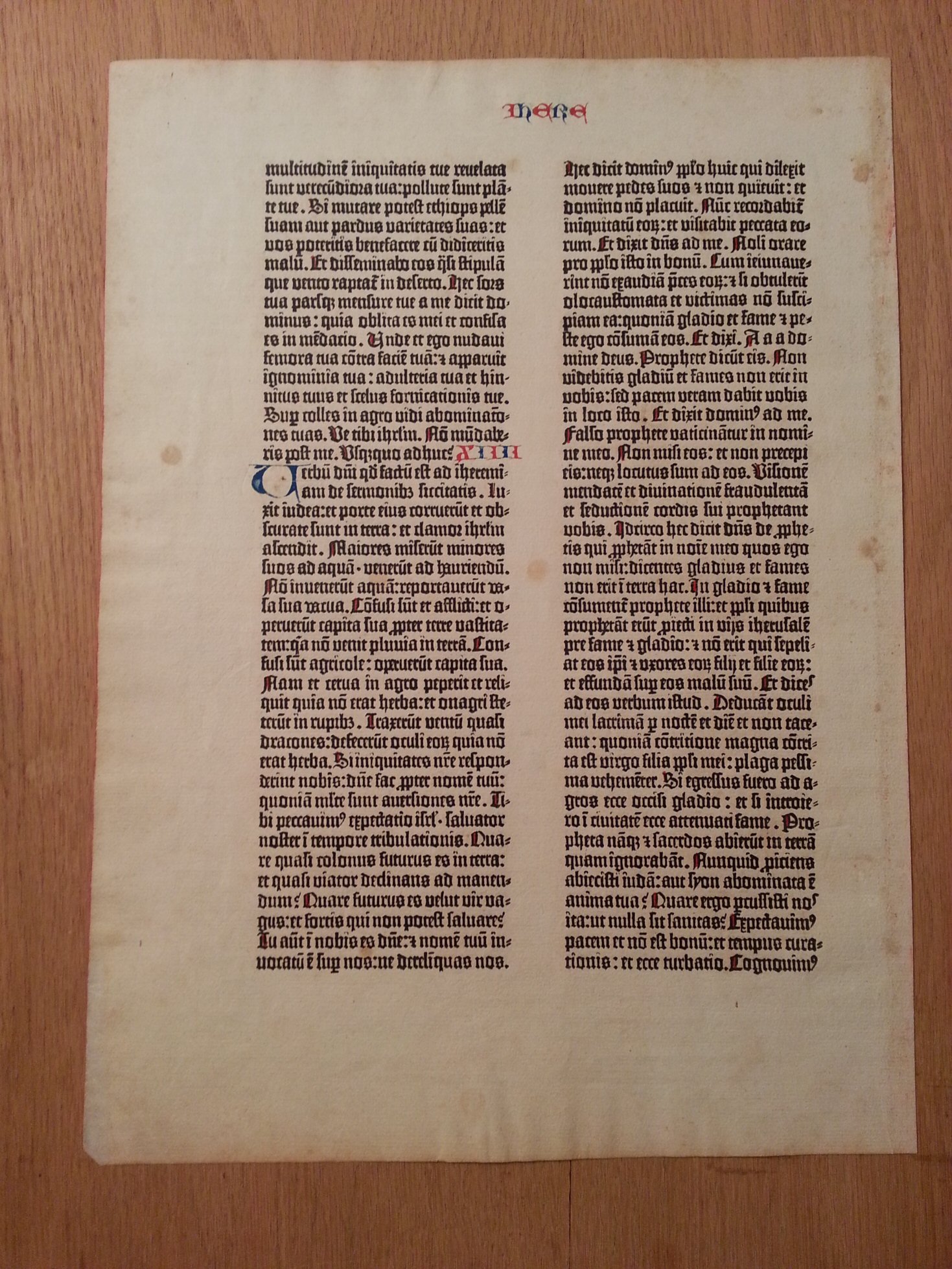return |

|
Noteworthy ProjectsGutenberg Bible Leaf |
return to |
|
In 1993 I had the opportunity to clean a single page of the Gutenberg Bible owned by the University of Missouri. The Gutenberg Bible was the first major book printed in the West using movable type. Printed in Germany in the 1450's by Johannes Gutenberg, it is an edition of the Latin vulgate bible. Only 48 complete copies, or substantial portions of copies, currently survive and they are considered to be among the most valuable books in the world. The single leaf owned by the University was originally in a presentation case. Basically, someone took a partial copy of one of the known authentic Bibles, separated it into individual leaves, mounted those into presentation cases like this, then sold those to collectors and institutions which wanted to have their own sample of the Bible. Each one is now worth on the order of $50,000. I recently had the opportunity to work on this item again. It had been separated from its presentation case, even when I worked on it before. Now the leaf itself needed some cleaning and minor repair, and the separate presentation case required some additional attention. Here are a few photos of that project. |
||
 |
LEFT: the front of the presentation case, with the title in gold. RIGHT: the title page of the presentation case. This page explains a bit more why it is just a ‘leaf’ from one of the Bibles |
 |
 |
The front (left) and back (right) of the page prior to treatment. Treatment in this case included cleaning and minor repair to the lower fore-edge corner. There was an area on the back where a slight fold was weakening the corner. So I reinforced it with a bit of handmade kozo paper (from the UICB – where I trained as a conservator), and a little bit of wheatpaste. |
 |
 |
LEFT is a detail of the repair in process, before the excess was trimmed off. RIGHT is the completed repair, almost invisible, in keeping with current conservation practices, where you don’t want a repair to be a distraction, but you do want it to be evident to the trained eye, so they know the ‘honest’ history of the item and whether it has been treated/repaired. |
 |
 |
The front (left) and back (right) of the page after cleaning and repair. Not a huge difference but if you look closely you can see that it is notably cleaner on the fore-edge, particularly the lower corner. |
 |
